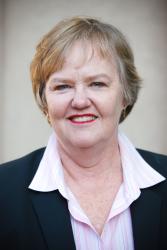Policy Brief #182
Protection of people from oppressive governments, civil conflict and disasters has moved to the top of the international agenda. The United Nations Security Council authorized all measures necessary to protect civilians in Libya as the airstrikes began. Humanitarian agencies-working in more places and under more difficult conditions than ever before-are grappling with the aftermath of Japan’s massive earthquake even as they are also working with displaced people in Haiti and Ivory Coast and responding to hundreds of thousands of people fleeing Libya. And increasingly these agencies are not only trying to assist people through provision of relief items, but also trying to protect them. But with so many global organizations mobilizing to protect civilians when disasters strike and conflicts break out, the concept of protection has begun to lose its distinctive meaning.
Can anyone “do” protection? In The Politics of Protection: The Limits of Humanitarian Action (Brookings Institution Press, 2011), I describe how protection has been stretched to include all manner of important activities-from provision of food to curriculum development, from advocacy to monitoring, from building latrines to voter registration. Beyond affirming the responsibility of governments to protect their people, international law offers no clear guidance on how to translate the principles of protection into action.
Given the likelihood that conflicts will continue and natural disasters will increase in the future, much more attention is needed on the question of protection, which has emerged over the years from international humanitarian law, refugee law and human rights law. The most visible part of the international humanitarian system is the vast array of U.N. agencies and nongovernmental organizations. Yet military forces, the International Committee of the Red Cross, and thousands of civil society organizations are also major actors in humanitarian response. This brief describes observations and recommendations on protection in humanitarian work culled from my forthcoming book.
| RECOMMENDATIONS |
||
With changes in the nature of conflict and with the likelihood of increasing severity and frequency of sudden-onset disasters because of climate change, more attention needs to be paid to understanding how humanitarian actors can-and cannot-protect people. The United Nations and other humanitarian actors should consider the following recommendations:
|
The Brookings Institution is committed to quality, independence, and impact.
We are supported by a diverse array of funders. In line with our values and policies, each Brookings publication represents the sole views of its author(s).





